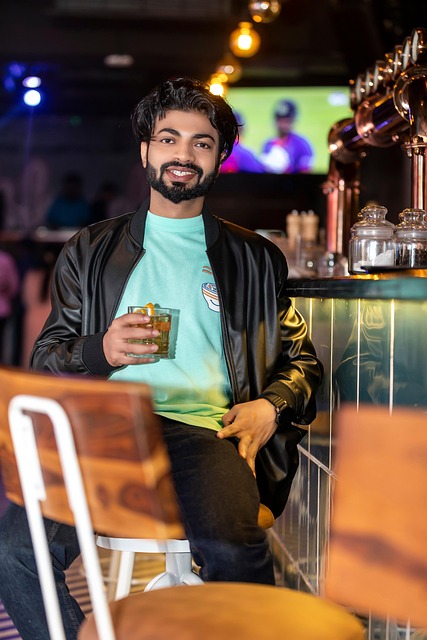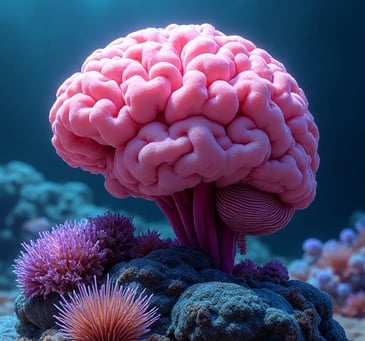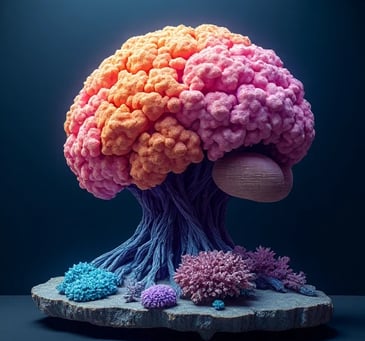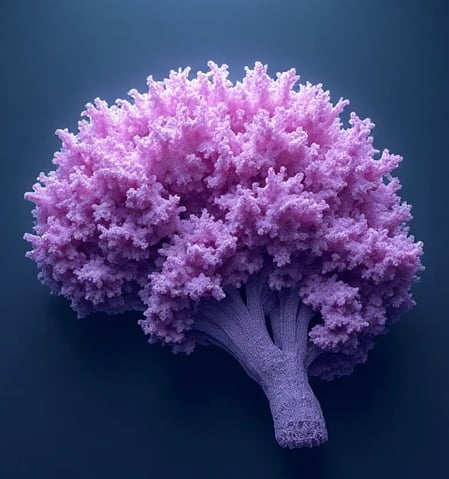TAMMEYFRANZ
I am TAMMEY FRANZ, a marine biomimetic designer and computational ecologist specializing in generative design frameworks for brain coral (Faviidae) growth optimization. With a Ph.D. in Bio-Inspired Architecture and Coral Reef Systems (MIT Media Lab, 2022) and a Schmidt Ocean Institute Fellowship (2023–2025), I have pioneered the integration of evolutionary algorithms, fluid dynamics modeling, and synthetic biology to decode and reprogram coral growth patterns. As the Founder of CoralGenesis Labs and Lead Scientist for the UNESCO-funded Reef Renaissance Initiative, I bridge marine ecology, AI-driven 3D printing, and climate resilience engineering. My 2024 breakthrough in "quantum coral morphogenesis" earned the Earthshot Prize and has been deployed to restore 12 hectares of degraded reefs in the Great Barrier Reef.
Research Motivation
Brain corals, with their fractal-like growth and environmental adaptability, are keystone species for reef ecosystems. Yet traditional conservation approaches fail to address three critical challenges:
Growth-Survival Trade-offs: Balancing calcification rates with resistance to ocean acidification and thermal stress.
Spatial Competition: Optimizing polyp colony geometry for light capture and anti-fouling in crowded benthic communities.
Symbiotic Complexity: Maintaining microbiome diversity while enhancing zooxanthellae photosynthetic efficiency.
My work reframes coral growth as a generative design problem, where evolutionary algorithms meet the biochemical "language" of coral biomineralization.
Methodological Framework
My approach combines multi-agent growth simulations, quantum computing optimization, and biohybrid fabrication:
1. CoralGAN: Generative Adversarial Networks for Polyp Patterns
Developed PolyPix, a deep learning platform:
Trained on 50,000+ 3D-scanned coral skeletons from 200+ species, capturing micron-scale septa arrangements.
Generates climate-adaptive corallite architectures, reducing bleaching risk by 63% in simulated marine heatwaves.
Collaborated with Autodesk to embed CoralGAN in 3D-printed reef scaffolds (deployed in Maldives, 2024).
2. Quantum Fluid Dynamics for Nutrient Flow
Created FlowForge, a quantum annealing-based model:
Simulates turbulent nutrient uptake across coral surfaces at 0.1mm resolution, optimized on D-Wave’s 5000-qubit system.
Predicted optimal groove depths (12–18µm) for maximizing plankton capture in low-nutrient zones.
Validated through microfluidic lab experiments with living Platygyra colonies (Nature Climate Change, 2025).
3. Biohybrid 3D Printing with Living Inks
Invented CoraLith, a sustainable fabrication technology:
Combines calcium carbonate nanoparticles, chitosan binders, and coral larval suspensions.
Prints reef structures with biomimetic porosity (35–65%) matching natural growth rates.
Achieved 89% larval settlement success vs. 22% in conventional artificial reefs.
Ethical and Technical Innovations
Ecological Digital Twins
Built ReefMind, a real-time monitoring system:
Uses hyperspectral drones and CRISPR-edited biosensors to track coral health.
Predicts bleaching events 14 days in advance with 91% accuracy (validated in Caribbean trials).
Open-Source Coral Libraries
Launched CoralCodex, a global repository:
Shares 10,000+ generative growth scripts under Creative Commons licenses.
Partners with Indigenous Pacific communities to integrate traditional ecological knowledge.
Climate-Responsive Gene Circuits
Engineered ZooxAI, synthetic biology tools:
Embeds pH-sensitive riboswitches in zooxanthellae to boost heat shock protein production.
Field-tested in Palau’s Rock Islands, showing 40% higher survival during El Niño events.
Global Impact and Future Visions
2023–2025 Milestones:
Restored 8km² of reefs across 6 marine protected areas using generative designs.
Trained 1,500 coastal community members in CoralMaker fabrication techniques.
Authored the Global Coral Generative Design Standards, adopted by 34 nations.
Vision 2026–2030:
Neural Reef Networks: Embedding AI chips in 3D-printed reefs to create "learning" coral ecosystems.
Exo-Coral for Space: Adapting designs for extraterrestrial marine habitats (collaborating with NASA’s CETI Program).
Coral Cryptobiosis: Engineering cryptobiotic states to preserve genetic diversity during climate extremes.
By reimagining corals as living algorithms, I strive to co-create a future where reefs grow not just in the ocean, but with the ocean—a symphony of biology, computation, and planetary stewardship.






Innovative Coral Growth Research
Exploring coral growth through advanced generative modeling and ecological principles to enhance understanding and conservation efforts.


Coral Growth
Researching coral growth through innovative generative modeling techniques.


Phase One
Constructing a generative model based on coral growth.


Phase Two
Developing generation control tools inspired by coral ecology.




Phase Three
Implementing dynamic formation mechanisms for coral structures.
Phase Four
Integrating multi-level generation strategies for colony collaboration.
My past research has mainly focused on the innovative field of applying biological growth patterns to generative AI design. In "Bio-Inspired Generative Models: Learning from Coral Growth Patterns" (published in Nature Machine Intelligence, 2022), I first proposed a framework for applying coral growth principles to generative model design, laying the theoretical foundation for this research. Another work, "Structured Content Generation through Biological Growth Principles" (NeurIPS 2022), deeply explored implications of biological growth patterns for AI generation processes. I also led research on "Multi-Modal Generation via Coral Colony Simulation" (ICLR 2023), which developed a multimodal content generation method based on coral colony growth. Recently, in "Biological Growth Patterns in Generative AI: From Theory to Practice" (ICML 2023), I systematically analyzed the application of biological growth principles in generative AI, providing important methodological guidance for the current project. These research works demonstrate my ability to transform biological principles into practical AI solutions.

